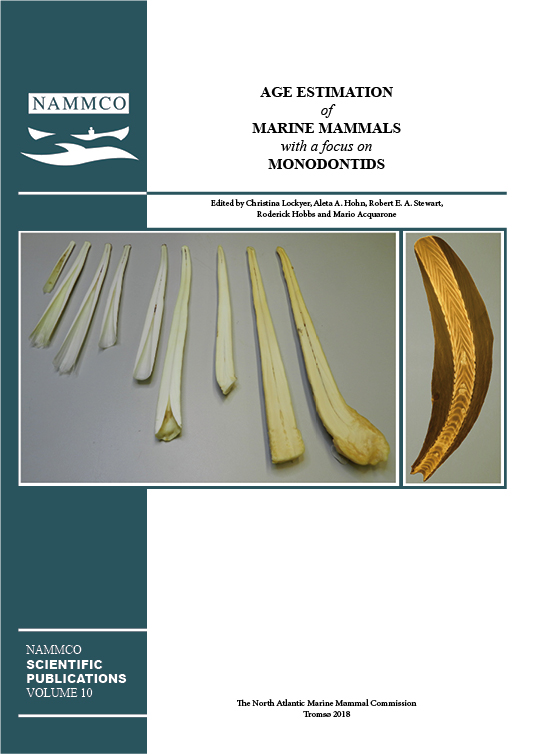Report of the workshop on age estimation in beluga: Beaufort, North Carolina, US 5-9 December 2011
DOI:
https://doi.org/10.7557/3.3731Keywords:
age determination, monodontids, beluga, Delphinapterus leucas, narwhal, Monodon monocerosAbstract
A workshop convened by C. Lockyer and A. A. Hohn to examine variation among readers in estimating beluga ages was held in Beaufort, North Carolina, US. Terms of Reference for the workshop included the following:
1. Provide a guide as to acceptable levels of accuracy and precision for age reading that will enable ages to be used in population models.
2. Conduct an inter-reader/laboratory comparison for calibration and standardization of age readings from GLG counts among all readers/laboratories.
3. Provide information on validation that will enable GLG counts to be translated to real age.
4. Produce a manual of guidelines for the preparation and reading of GLGs in beluga teeth.
Presentations by participants are abstracted here. Then we report on the processes used to compare sections, images, and interpretation, and generate guidelines for best practices in beluga age estimation. A comparative study quantified differences among readers and found that precision of experienced readers was good, higher than reported for other odontocetes. Participants agreed that counting GLGs using well prepared thin sections was preferred because they are simpler to prepare than stained sections and there was more agreement among readers compared to using half sections. Examination of teeth from captive beluga as both untreated sections and stained sections and did not clarify the reading of wild beluga teeth. This Workshop concurred with Workshop 1 (Tampa 26-27 November 2011) that interpreting one GLG as an annual record is irrefutable. Guidelines for best practices were developed.





